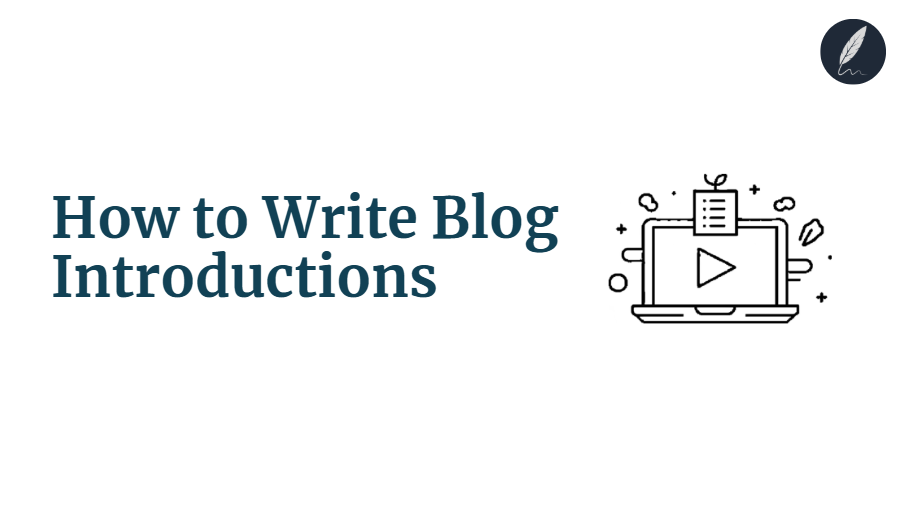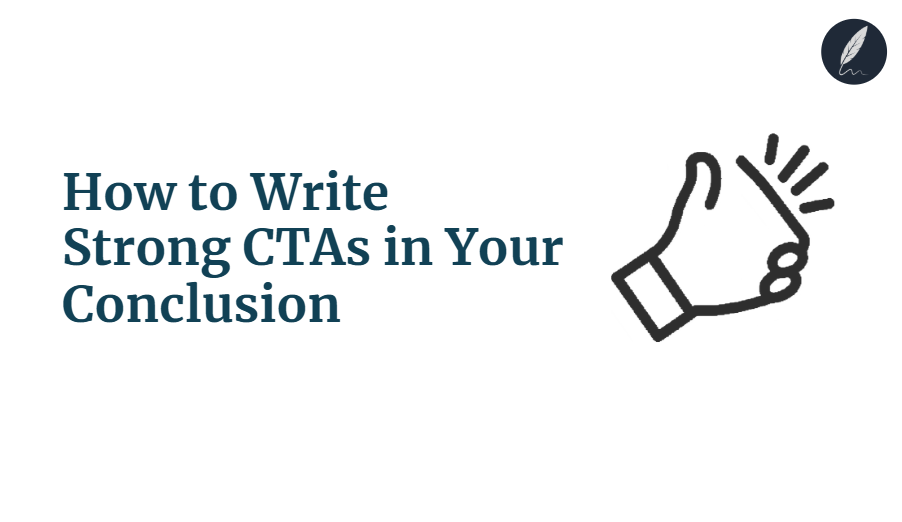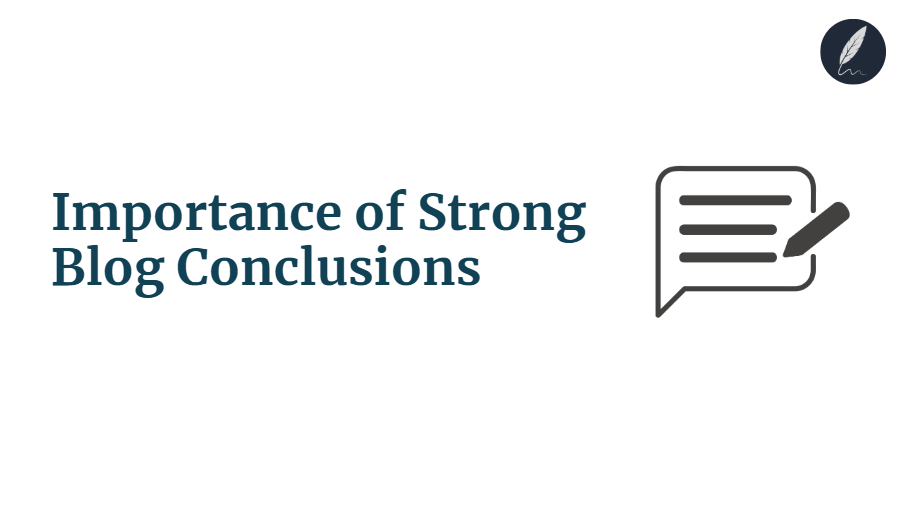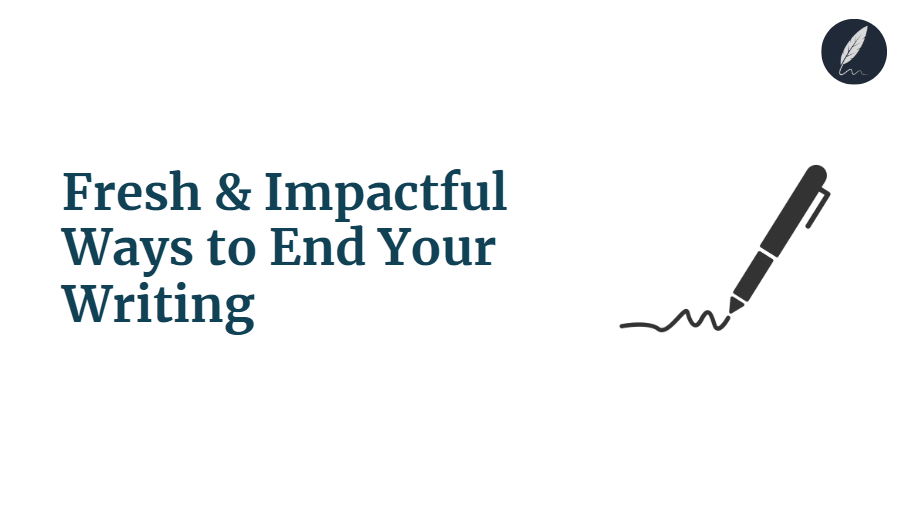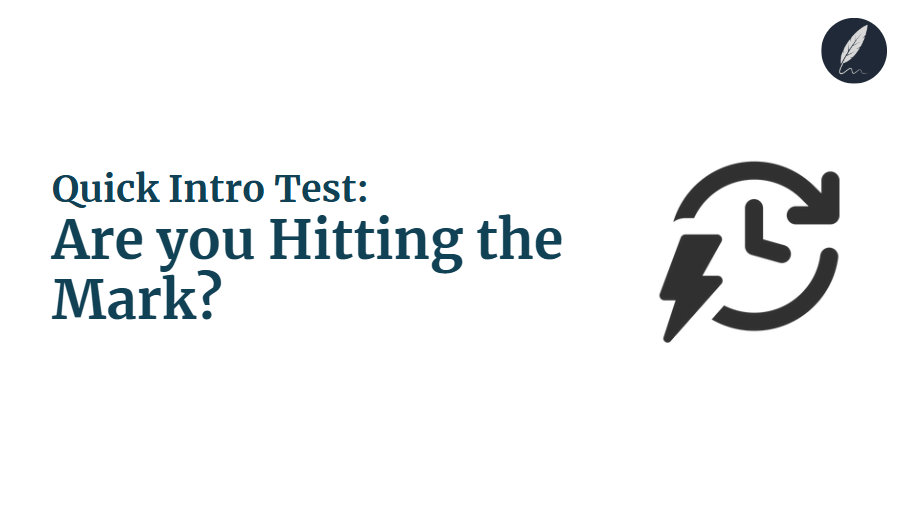In the fast-paced digital world, your blog post’s introduction is everything.
A weak start means readers click away before they even see your valuable content. Learn how to write blog introductions that truly hook readers and transform casual visitors into engaged followers.
This comprehensive guide will equip you with tips for writing captivating intros that make every word count.
You’ll discover the essential elements of a good blog introduction, a practical blog intro formula, and learn how to start a blog post effectively with inspiring best blog introduction examples.
Stop losing readers at the first glance.
Key Takeaways
- Step 1: Understand your target readers’ problems, interests, and language before writing.
- Step 2: Brainstorm 3-5 different hooks (questions, stats, stories) and pick the strongest.
- Step 3: Establish a brief background about your topic and why it matters right now.
- Step 4: State your article’s core promise clearly - what will readers learn or gain?
- Step 5: Explicitly explain how your content will solve problems or improve their lives.
- Step 6: Create a smooth bridge from introduction to your first main section.
Why a Killer Introduction Matters
Think about meeting someone new. You form an opinion in just seconds, right?
The same goes for your blog posts. A strong opening is your content’s first impression, and it makes all the difference. It’s how you hook readers from the very first word.
1. The First Impression: Hook, Credibility, and Tone
Your introduction does a lot more than just say “hello.”
It quickly tells your reader what to expect from your article. It sets the tone, whether your blog post will be helpful, funny, serious, or inspiring.
More importantly, a good intro starts to build your credibility. It shows readers you know what you’re talking about and that your content is worth their time.
Imagine opening a blog post that immediately addresses a problem you have.
That’s an instant connection.
2. Combating High Bounce Rates
Have you ever clicked on an article, read the first paragraph, and then left right away?
That’s called a “bounce.”
A high bounce rate means many visitors are leaving your page without reading much. This often happens because the blog post openings fail to draw them in.
Research shows how quickly readers decide if content is for them. Some studies suggest that over half of website visitors spend less than 15 seconds on a page before leaving.
If your introduction isn’t compelling, you’re losing a huge chunk of your potential audience before they even get to your valuable insights.
A powerful introduction is your best defense against high bounce rates because it creates an instant connection and makes readers want to keep going.
3. Setting the Stage for Engagement
Beyond just keeping readers on your page, a killer introduction also prepares them mentally for what’s to come. It acts like a guide, warming them up for the main content.
This is a key part of starting a blog post effectively.
A well-crafted opening creates a sense of anticipation. It makes promises about the information or solutions you’ll provide, building excitement and encouraging readers to dive deeper.
When you properly set the stage, your audience is more likely to fully engage with your message, absorb your ideas, and even take action based on your content.
The Essential Elements of a Powerful Introduction
To truly hook your readers and encourage them to explore your content, your blog post openings need to be carefully crafted with several key ingredients.
Think of these as the fundamental elements of a good blog introduction, working together to create an irresistible pull.
1. The Irresistible Hook
Every powerful introduction begins with a “hook”, a compelling opening line or two designed to instantly capture your reader’s attention and make them curious enough to continue.
Here are some of the best blog introduction examples for hooks:
- Question Hook: This type directly addresses your reader’s pain point or curiosity. It makes them feel understood and prompts them to seek the answer your article provides.
- Statistic/Fact Hook: Start with a striking piece of data or an intriguing fact. This establishes credibility right away and highlights the scale of the problem or the importance of the solution.
- Anecdote/Story Hook: People love stories. A short, relevant personal anecdote or a hypothetical scenario can create an emotional connection and draw the reader into your narrative.
- Bold Statement Hook: Make a strong, perhaps even provocative, claim. This challenges assumptions and immediately signals that your content offers a fresh perspective.
- Problem-Solution Hook: Immediately identify a problem your reader faces and hint that your article holds the key to solving it. This directly addresses their needs and shows instant value.
2. Context and Background
After you’ve snagged their attention, provide just enough context to set the scene.
This doesn’t mean a deep dive into the topic’s history, it’s about briefly introducing the overarching subject and why it matters without overwhelming the reader. Think of it as gently leading them into the conversation.
3. The Main Idea/Thesis Statement
This is where you clearly state the purpose of your article. What will the reader gain? What problem will you solve, or what knowledge will you impart?
This statement is your core promise to the reader. It clearly defines the central theme and is a non-negotiable element of a good blog introduction.
4. Relevance to the Reader
Even after stating your main idea, explicitly connect it back to your reader’s world.
Why is this information important to them? How will it help them achieve their goals, solve their problems, or improve their lives?
Answering the unspoken question, “What’s in it for me?” is vital for creating engaging blog intros that resonate deeply.
5. The Seamless Transition
Finally, your introduction should end with a smooth transition. This is a sentence or two that gently leads the reader from the introduction’s promise directly into the first main section of your article’s body.
It should feel natural, like a bridge guiding them further into your valuable content. Avoiding abrupt shifts keeps the reader immersed and ready to continue reading.
Structuring Your Introduction Step-by-Step: A Practical Formula
You now know the essential elements of a good blog introduction: the hook, context, main idea, reader relevance, and smooth transition.
But how do you combine these ingredients into a powerful, cohesive opening?
This section provides a practical, step-by-step blog intro formula to help you consistently write blog introductions that truly hook readers.
Step 1: Understand Your Audience and Purpose
Before you even write a single word, pause and think.
Who are you writing this for? What do you want them to feel, learn, or do after reading your article? Knowing your target audience, their problems, interests, and language is critical.
For example, if you’re writing for busy entrepreneurs, your introduction should quickly get to the point and highlight a clear business benefit.
If it’s for students, perhaps a more illustrative or relatable hook might work best.
Understanding your audience helps you tailor every choice, from your hook to your tone, ensuring your blog post openings resonate directly with them.
Step 2: Brainstorm Your Hook
This is where you grab attention. Based on your audience and article purpose, brainstorm 3-5 different types of hooks that could work.
Remember the options we discussed: a question, a statistic, an anecdote, a bold statement, or a problem-solution approach.
Step 3: Establish Context and Problem
After your hook, gently introduce the broader topic of your article. This isn’t the time for a detailed explanation, but rather a brief background that sets the scene.
Why is this topic important right now? What challenge or situation does your article address?
For instance, if your hook was a statistic about high bounce rates, your context might briefly touch on the increasing competition for online attention.
This section helps bridge the immediate grab of the hook with the deeper dive into your main idea.
Step 4: State Your Main Idea Clearly
Here’s where you make your promise to the reader. What is the core message or primary takeaway of your article? This is your thesis statement.
It should be concise and leave no doubt about what your article will deliver.
For example, “In this article, you’ll discover a proven blog intro formula to captivate your audience from the very first sentence.” This clarity ensures readers know exactly what they’re getting into and why they should keep reading.
Step 5: Articulate Reader Benefits
Now, explicitly tell your readers why they should care. How will your article solve their problem, improve their situation, or help them achieve a goal?
This is your chance to connect the dots between your topic and their personal needs or aspirations.
Use phrases that highlight the positive outcomes. Will they save time, make more money, reduce stress, or gain new skills?
Making the benefits clear turns curiosity into a commitment to read on.
Step 6: Craft a Smooth Transition
Your final step is to create a seamless bridge from your introduction to the first main section of your blog post. This avoids an abrupt jump and keeps the reader immersed in your content. Aim for 1-2 sentences that naturally lead them into the details you’re about to present.
For example, “Ready to put these tips for writing captivating intros into practice? Let’s dive into the common mistakes that can derail your efforts before they even begin.”
Once you’ve drafted your introduction using this framework, it’s wise to review it.
Some of The Best Blog Introduction Examples
Understanding the theory behind how to write blog introductions is one thing. Seeing it in action makes all the difference.
Let’s explore some of the best blog introduction examples that successfully hook readers and set the stage for engaging content.
For each example, we’ll break down how it uses the key elements of a good blog introduction we’ve discussed.
Example 1: Informative Post (Problem-Solution Hook)
Imagine you’re writing a post about boosting your website’s organic traffic.
Example Intro: “Are your website analytics looking a little stagnant? In today’s crowded online marketplace, simply having a website isn’t enough, you need consistent organic traffic to truly thrive. This article reveals five proven SEO strategies that will help you attract more visitors from search engines, turning passive browsers into active customers.”
Breakdown:
- The Hook (Problem-Solution): “Are your website analytics looking a little stagnant?” This immediately identifies a common pain point for business owners and hints at a solution.
- Context and Background: “In today’s crowded online marketplace, simply having a website isn’t enough; you need consistent organic traffic to truly thrive.” This broadens the problem and emphasizes the need for a solution.
- The Main Idea/Thesis Statement: “This article reveals five proven SEO strategies that will help you attract more visitors from search engines…” This clearly states what the reader will gain.
- Relevance to the Reader: “…turning passive browsers into active customers.” This connects the solution directly to a tangible business benefit.
- The Seamless Transition: The entire sentence flows into the promise of the article’s core content.
Example 2: How-To Guide (Question Hook)
Let’s say your article is a step-by-step guide on mastering time management.
Example Intro: “Ever feel like there aren’t enough hours in the day to get everything done? You’re not alone. In our increasingly busy lives, effective time management isn’t just a nice-to-have, it’s a necessity for achieving your goals and reducing stress. This comprehensive guide will walk you through actionable techniques to reclaim your schedule, boost productivity, and finally feel in control of your day.”
Breakdown:
- The Hook (Question): “Ever feel like there aren’t enough hours in the day to get everything done?” This common, relatable question instantly draws the reader in.
- Context and Background: “You’re not alone. In our increasingly busy lives, effective time management isn’t just a nice-to-have; it’s a necessity…” This provides general context for the problem.
- The Main Idea/Thesis Statement: “This comprehensive guide will walk you through actionable techniques to reclaim your schedule…” This sets the expectation for a practical, step-by-step approach.
- Relevance to the Reader: “…to reclaim your schedule, boost productivity, and finally feel in control of your day.” The benefits are clearly outlined.
- The Seamless Transition: The promise of “actionable techniques” naturally leads into the body of a how-to guide.
Example 3: Story-Driven Content (Anecdote Hook)
Consider an article about overcoming procrastination.
Example Intro: “It was 2 AM, and my deadline for the biggest project of my career was just hours away. My desk was a mess, my coffee was cold, and all I had was a blank screen. Sound familiar? Procrastination often feels like an unbreakable habit, holding us back from our true potential and filling us with anxiety. In this post, I’ll share the simple, yet powerful, mental shift that helped me finally beat chronic procrastination and consistently hit my goals.”
Breakdown:
- The Hook (Anecdote): “It was 2 AM, and my deadline for the biggest project of my career was just hours away… Sound familiar?” This short, relatable story creates an immediate emotional connection.
- Context and Background: “Procrastination often feels like an unbreakable habit, holding us back from our true potential and filling us with anxiety.” This expands on the common experience of the problem.
- The Main Idea/Thesis Statement: “In this post, I’ll share the simple, yet powerful, mental shift…” This clearly states what the article will deliver.
- Relevance to the Reader: “…that helped me finally beat chronic procrastination and consistently hit my goals.” The solution is directly tied to a positive outcome for the reader.
- The Seamless Transition: The phrase “In this post, I’ll share…” guides the reader directly into the solution.
Example 4: Data-Backed Analysis (Statistic Hook)
Imagine an article analyzing recent trends in social media marketing.
Example Intro: “Did you know that 85% of consumers now expect brands to have an active social media presence? What’s more, platforms are constantly changing their algorithms, making it harder than ever for businesses to reach their audience organically. Understanding these shifts is crucial for any marketing strategy. This article dives deep into the latest social media marketing statistics and trends of 2024, providing data-driven insights you need to refine your strategy and truly connect with your target market.”
Breakdown:
- The Hook (Statistic): “Did you know that 85% of consumers now expect brands to have an active social media presence?” This compelling statistic immediately grabs attention and establishes the relevance of the topic.
- Context and Background: “What’s more, platforms are constantly changing their algorithms, making it harder than ever for businesses to reach their audience organically.” This adds further context about the challenges in the field.
- The Main Idea/Thesis Statement: “This article dives deep into the latest social media marketing statistics and trends of 2024…” This clearly states the article’s purpose.
- Relevance to the Reader: “…providing data-driven insights you need to refine your strategy and truly connect with your target market.” The benefits are clear and actionable.
- The Seamless Transition: The mention of “data-driven insights” naturally leads into the analytical content that follows.
These blog post openings demonstrate how using different hook types and consistently applying the elements of a good blog introduction can lead to highly engaging blog intros that successfully hook readers from the very first sentence.
Write smarter with Orwellix
The Orwellix AI Capabilities that helps you craft clearer, more effective content.
Conclusion
We’ve explored the essential elements that make an opening compelling, walked through a step-by-step process to build your intro, and understood the practical implementation of some of the best blog post introduction examples.
By focusing on hooks, clarity, and reader relevance, you can craft engaging blog intros that immediately grab attention and keep your audience reading.
Remember, your introduction is your golden opportunity to hook readers and set the stage for all the valuable content that follows. Give your words the strong start they deserve.
Frequently Asked Questions (FAQs)
1. How long should a blog introduction be?
A blog introduction should be concise, typically 3-5 sentences long, or roughly 50-100 words. The main goal is to hook readers quickly, so avoid being overly wordy.
The ideal length can vary slightly depending on your article’s overall length, the complexity of the topic, and your specific audience.
2. Can I use a personal story as a hook for my blog post?
Yes, absolutely!
Using a personal story, or anecdote, as a hook is a highly effective way to create an engaging blog intro.
When using a personal story, ensure it’s brief, relevant to your article’s topic, and quickly leads into the main point you want to make. It should set the tone and immediately draw the reader in.
3. How do I tailor an introduction to a specific audience?
To tailor your blog introduction to a specific audience, you first need to deeply understand who they are. Think about their problems, interests, goals, and even the language they use.
Once you know your audience, choose a hook that directly speaks to their pain points or aspirations. Use vocabulary they understand and avoid jargon they might not.
Clearly articulate “What’s in it for them?” in your introduction, showing how your article will solve their specific problems or benefit their lives.
4. What’s the best way to transition from the intro to the body of the article?
The best way to transition from your engaging blog intros to the main body is to create a seamless bridge in the final sentence or two of your introduction.
This sentence should gently guide the reader, signaling that you’re about to delve into the details.
For instance, you might use phrases like “Now that we understand why a strong intro matters, let’s explore the essential elements…” or “Ready to put these tips for writing captivating intros into practice? Let’s dive in.”
5. Should I include keywords in my introduction for SEO purposes?
Yes, it’s generally a good idea to include your main keywords naturally within your blog introduction for SEO purposes. This helps search engines understand what your article is about and can improve your visibility.
However, the most important rule is to prioritize readability and natural language. Never stuff keywords into your intro just for SEO, this can make your writing sound awkward and turn readers away.
A well-written, clear, and engaging blog intro that includes relevant keywords will benefit both your readers and your SEO.
Join 10,000+ Professionals
Unlock your potential with Orwellix. Experience advanced features and tools designed to enhance your writing and productivity.
Get Started with Orwellix